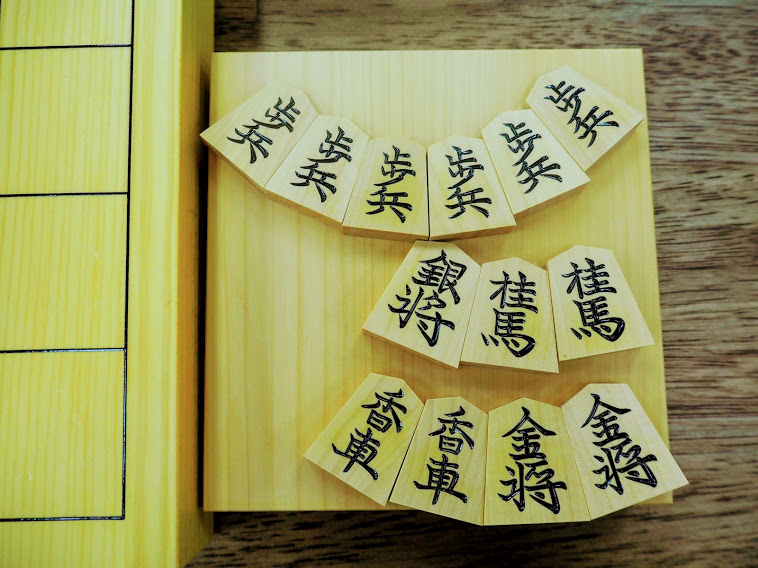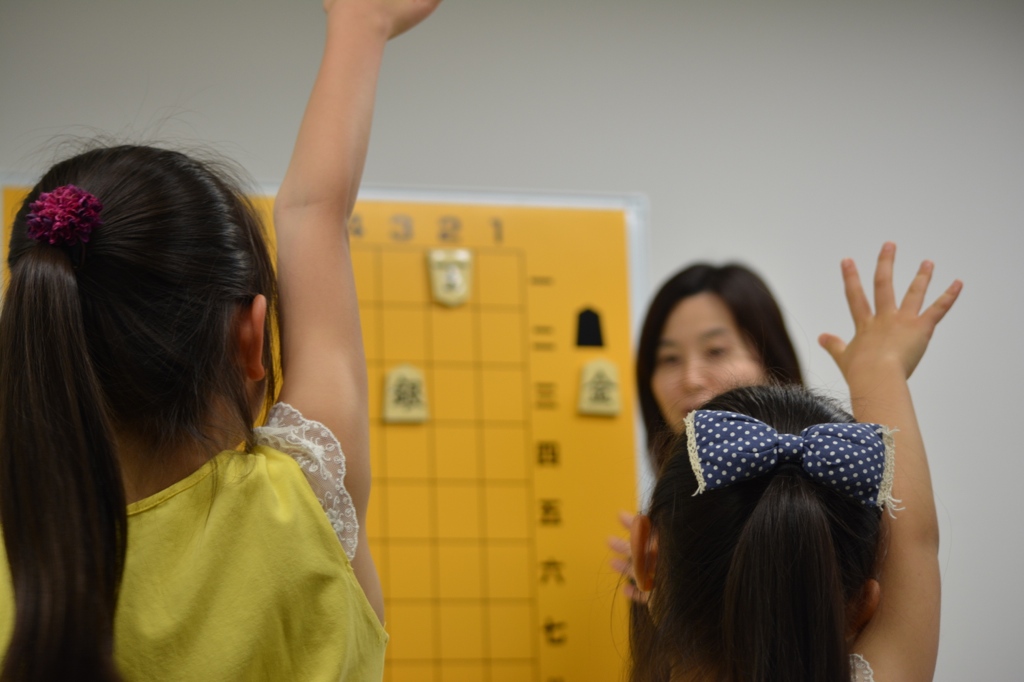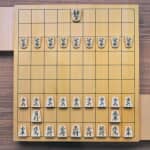Shogi 2 June 2017
Mate Problem: Jammed with Good Points
There are three major Shogi practice methods: Mate problems, actual games, and replaying a recorded game in Kifu notation.
It is said that mate problems are regarded as the paramount among them. Today, I would like to talk about its distinction. (Surely, the other two methods are also very important.)
1. You will get to understand typical patterns observed at the end of the game.

Beginner players apt to play an endless game.
It is assumed that most beginners tend to focus too much on taking the opponent’s pieces, and to lose their prior purpose of capturing the opponent’s King. This is one of the possible reasons for the beginners’ phenomenon above. Understandably, you may keep your hand pieces to make the game favorably for you. Also, being afraid of misusing hand pieces, you may hesitate to use them.
Mate problem will be helpful for the above matter.
Solving many Mate problems, you will come to recognize their various patterns and be able to utilize your knowledge. That is to say, once you remember which piece can be used to checkmate in which situation, you could use hand pieces tactfully.
Also, Mate problem requires you to play two roles: an attacker side who makes checkmate and a King’s side who makes King escape.
You have to think things not only from your perspective, but from the opponent’s standing point. As a result, you will be able to avoid unproductive movements to bring a checkmate, and know the most effective defense pattern in which an attacker side can’t make checkmates. As you solve many problems, you will acquire the ways to terminate a game. This acquired ability will reduce the phenomenon which commonly occurs to beginners.
2. Your thinking ability will be enhanced.

It might be a bit exaggeration, but if you only know piece movements, it is possible to play a Shogi game without thinking. Moreover, with a chart to explain how to move each piece and a hand book to describe a Shogi rule briefly, even those who are totally unfamiliar with Shogi can play a game.
As you know, if you play a game, just following a rule without thinking, it is not fun.
Thinking process is the essence of Shogi. Since you play a game with careful thinking, winning a game will make you very happy and losing a game will make you down very much.
Well, I am getting off the track. Let’s get back on.
Contrary to the real game case, you can’t move a piece tentatively in any situations of Mate problem. In each situation, the attacker side should make a checkmate with minimum numbers of movements, and King’s side need to let the king escape with maximum numbers. Mate problems are designed to have an answer to each movement. That means a player who is solving a problem has to carefully find the answer in every single situation.
Mate problems are made on the assumption of situations of the end game stage. However, if you could form a habit to think out the best answer when you make each movement, you will develop your thinking ability and can apply it to the beginning and middle of a game.
3. You can enjoy anywhere and anytime by yourself.

When it comes to a real game, you need to have somebody to be your opponent. Also, you need to prepare Shogi equipment, such as boards and pieces. It’s a bit hassle, but it’s not the case for checkmate problems. As you may find checkmate problems in books, app, or newspapers, you can try to solve them anywhere and anytime at your convenience even by yourself.
You may think Shogi game requires you to have two players. But, no need to warry about it. As I mentioned, with mate problems you will mostly take both sides, an attacker side and a King’s side. You will learn how to attack and defend at the same time. This efficiency is the highest advantage of checkmate problems.
4. Won’t take a long time.

As I talked in Section. 1, most beginners tend to take a quite long time to finish a game because of their lack of adequate Shogi skills.
When you start something new, you may have experiences in which you can feel happy and enjoyable with it. Accumulating those experiences is important to continue “something”. You could apply this for things around us, as you know.
I think when you win a Shogi game, you will have such happy or enjoyable feelings. Under the situation in which you need a long time to experience a winning, you might lose your interest in Shogi before you come to like it.
On the other hand, when you solve a Mate problem, “winning” in the real game changes to “completion”. Surely, depending on the level of the problems, you have to take a time longer to feel this “completion” than that for an ordinal game. However, there are easy problems that you will check with the first one movement, and you will have happy and enjoyable feelings in about few minutes.
Also, in case of small children, they usually don’t have their companions to play with Shogi around them. So, they will make their mom to be their opponents. Needless to say, hectic lives are waiting for Moms: house care, child care, jobs, and so on. Playing one game is okay for busy Moms, but they might get driven crazy with children’s persistent requests to play more.
In that regard, Mate problem is relatively easy, children can play it by themselves. They will complete a problem and show their results, saying “I’ve done!”. Your only one word, “Well done!” will give children happy and enjoyable feelings.
5. You can have others’ advice.
You can solve a Mate problem with others. It may sound like a contradiction to the Section 3: you can play it by yourselves. For example, in Shogi classes, you can discuss to solve a bit difficult problem with your class mates, using a board and placing pieces.
During a real game, you shouldn’t interrupt and two players usually play a game in silence. Obeying unwritten rules, we refrain from saying throughout a game. Having conversations with others would help you to organize your ideas and thoughts, also through the conversations you could refresh yourselves. I would recommend that you sometimes solve a Mate problem with others.
I would like to give you one tip for the case when you work on a checkmate problems with others, children in particular. Try to have children who have the same level of Shogi skills, otherwise those who have better knowledge will answer and solve it solely. This will make children who don’t have much skills get bored.
6. It’s okay to quit half way through.

In a real game, since quitting a game means losing a game, you can’t throw away the game. To the contrary, as there is no win and no lose in checkmate problems, you can quit it at the point where you got stuck on.
You may choose either having some interval for retrying the same problem or going onto a different problem.
Now, I am closing today’s article. Am I successfully telling about good points of checkmate problems? Checkmate problems have a lot of advantages, so usually I introduce 5 elements for one topic, but today I am offering 6.
As I told you at the very beginning of this article, checkmate problems are effective practices to improve your Shogi skills. At the same time, from above, they also good for resting your weary head.
Improving children’s Shogi skills is surly very important, but we, I-tsu-tsu, put higher priority on letting them enjoy Shogi.
You may find other articles regarding Shogi in our blog!




